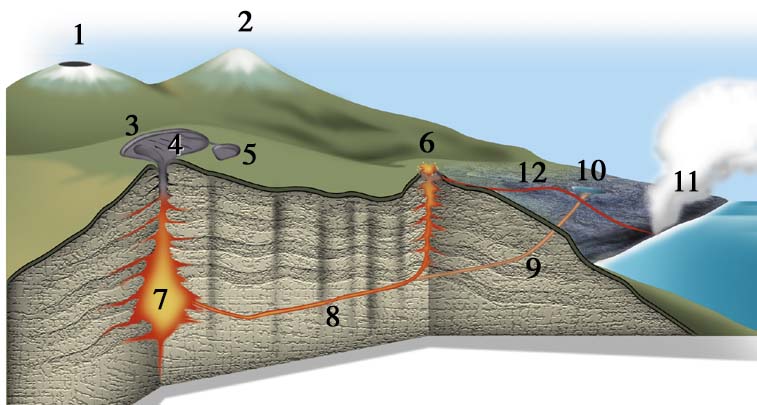

Anatomy of the Kilauea area
Not shown to scale; numbers correspond to key below

|
BACK TO TOP |
1 Mauna Loa
The largest volcano on Earth measures almost 11 miles from the ocean floor. From sea level, its peak is 13,679 feet high.2 Mauna Kea
The 13,796-foot peak houses some of the largest telescopes in the world.3 Hawaiian Volcano Observatory
Built in 1986, the HVO replaced the original observatory which was built in 1912.4 Kilauea Caldera
The large summit basin contains the smaller Halemaumau Crater. The caldera is 2 to 3 miles across and several hundred feet deep.5 Kilauea Iki
The collapsed cone along Kilauea's southwest rift zone means "Little Kilauea." The floor of the crater is 350 feet below its rim.6 Puu Oo
The main eruptive vent in 1983-86 and 1992 to the present. It means "Hill of the Oo bird."7 Magma reservoir
Believed to be located 1 to 4 miles beneath the surface.8 Active conduit
Provides a passage for lava to vents on the rift zone.9 Dormant conduit
A lava passageway that was once active.10 Kupaianaha pond
The lava pond was the focus of the eruption in 1986-1992. Often translated as "mysterious," it can also mean "amazing."11 Steam plume
Where lava is currently entering the ocean12 Lava tube
A hollow passageway on the earth's surface created by the topmost layer of a lava flow solidifying while the flow below remains liquid.